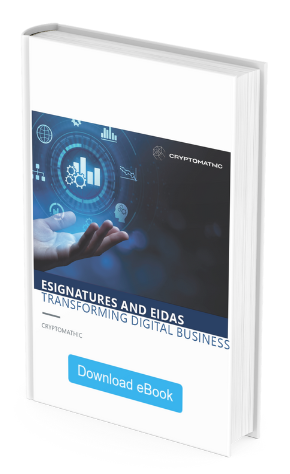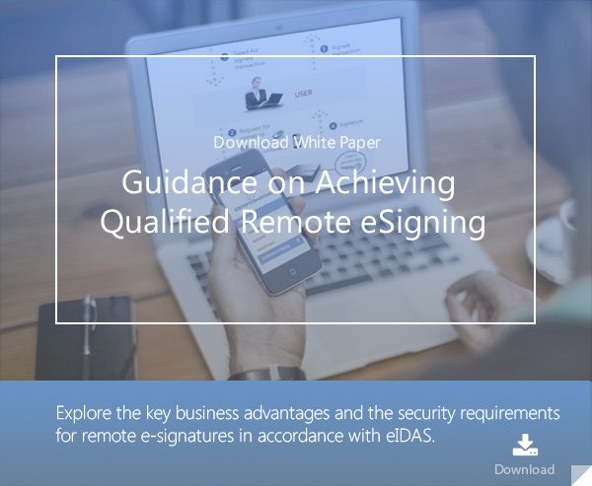4 min read
Setting Up Digital Signing Services: Key Steps Involved
 Stefan Hansen
:
06. February 2023
Stefan Hansen
:
06. February 2023

- Home >
- Setting Up Digital Signing Services: Key Steps Involved
Digital transformation has been a critical focus for businesses and institutions prior to the pandemic. Digital documents and e-signatures are a crucial part of this shift. The recent global crisis has served to hasten the implementation of such solutions; organizations have expedited the transition to enable remote work environments and transactional activity online.
As face-to-face collaboration was no longer possible, these technologies became necessary for carrying out transactions, formal arrangements, and authorizations. Organizations striving for digital trust should explore different infrastructures that can guarantee the authenticity, integrity and non-repudiation of transactions. High-assurance technologies such as electronic signatures regulated by legal frameworks, such as eIDAS, provide an extra layer of trust over simple electronic signatures. This is especially true in areas with laws favoring digital signatures over other forms.
For high-assurance signing, PDF documents and scans of handwritten signatures are not sufficient. Instead, digital signatures (or digital seals when representing a company) should be utilized as these take advantage of PKI technology to provide a powerful combination of identity verification, document authentication, anti-tampering and timestamping features that produce legally binding documents.
Digital signature standards
Industries and areas around the world have adopted electronic signature standards set by digital signature technology and certified CAs for business-related documents.
Setting up a digital signing service requires an understanding of the various eSignature standards and certified CAs that are available. Depending on the industry or region, different standards may be required for legally binding documents. For example, in the United States, the Electronic Signatures in Global and National Commerce Act (ESIGN) is the primary standard for electronic signatures. The eIDAS regulation is the primary standard for digital signatures in the European Union.
Most countries have now implemented laws and regulations based on the US or EU models, with many regions favoring the EU model (eIDAS regulation) of using digital signatures for local management of eSignatures. The eIDAS regulation specifies thee levels of electronic signature:
- Simple electronic signature: A simple electronic signature is a basic form of authentication that can be used to prove the identity of the signer.
- Advanced electronic signature: An advanced electronic signature is a more secure form of authentication that requires additional verification steps, such as two-factor authentication or biometric data.
- Qualified electronic signature: A qualified electronic signature is the most secure form of authentication and is legally binding in many countries. It requires the use of a qualified certificate issued by a certified CA.
Components of a digital signing service
To offer an effective, clear, reliable and scalable digital signature service, some crucial components are needed:
- Digital signing software: This is a type of software that enables users to digitally sign documents and other types of files. It is used to verify the authenticity of digital documents, as well as to ensure that the file has not been tampered with or altered in any way. Digital signing software can be used for a variety of purposes, including contracts, legal documents, financial transactions, and more.
- Identity verification and registration services offered by a Certification Authority (CA): When setting up digital signing services, one of the most important steps is identity verification and registration with a Certificate Authority. A CA is an entity that issues digital certificates to verify the identity of individuals or organizations. These certificates are used to authenticate users and secure transactions over the internet. The CA must be compliant with the applicable standards and regulations in order to issue legally binding digital certificates.
- Online Certificate Status Protocol (OCSP) services: OCSP is a protocol used to check the status of digital certificates, such as whether they have been revoked or not. It is designed to provide a more efficient way of checking certificate status than the traditional Certificate Revocation List (CRL) method.
- Timestamping services: Provide a way to prove that a document existed at a certain point in time, which can be used as evidence in legal proceedings.
- Identity and Access Management (IAM services: These services involve an identity provider (IdP) and secure authentication processes to ensure that the signer is who they say they are.
- HSMs or Hardware Security Modules: Specialized devices used to create and safeguard signing keys. These devices are designed to protect cryptographic keys from unauthorized access and malicious attacks. They provide a secure environment for the storage of digital certificates and other sensitive data related to digital signing services.
On top of all of this is the document signing workflow, which is designed to provide a streamlined and customized experience between users and the signing service. Depending on the business needs, customizations of the workflow might include meeting specific regulatory requirements, managing complex user scenarios, and integrating services such as document archiving, storage, ticketing systems, CRMs, and more.
Putting it all together
The first step in setting up a digital signing service is to choose the right provider. There are many providers available, so it’s important to do research and find one that meets the needs of your organization. It’s also important to make sure that the provider is compliant with any applicable laws and regulations in your region.
Once a provider has been chosen, the next step is to configure the various components in the system for use. This includes setting up user accounts, configuring authentication methods, and establishing document signing processes. The provider should be able to provide detailed instructions on how to do this.
Finally, it’s important to test the system to make sure that it is working correctly. This includes testing the authentication methods, document signing processes, and any other features of the system. Once everything has been tested and is working properly, the digital signing service can be used for secure online document signing.
At Cryptomathic, we strive to offer digital signing solutions for organizations of all sizes and sectors, alongside as many integration pathways with their existing signing processes as possible. We have the necessary components to set up a robust backend structure for signing services – so that our customers can choose how they want to implement their preferred signing workflows on top of it.
Cryptomathic Signer is an eIDAS-certified signature solution for providing qualified electronic signatures, enabling our clients to deliver tailored digital signing workflows which help build trust with their customers and partners in the evolving digital landscape.
For information regarding digital signing solutions provided by Cryptomathic, please visit our digital signature solutions page or get in touch with one of our experts.

